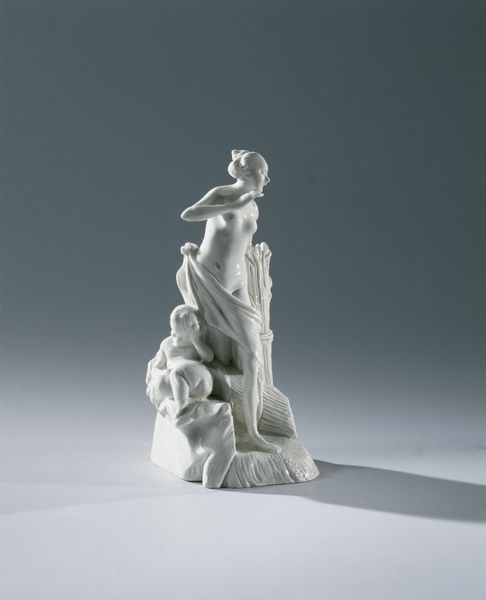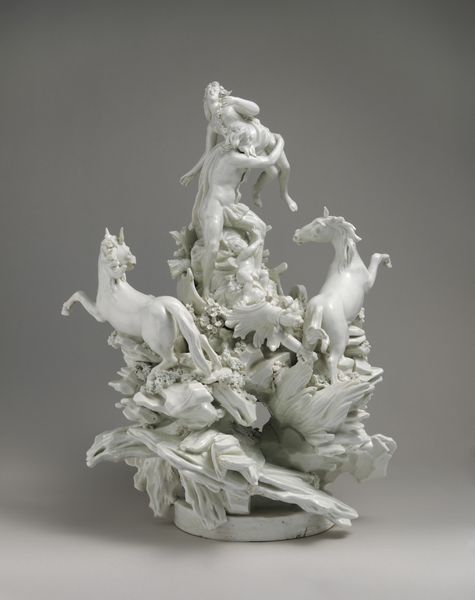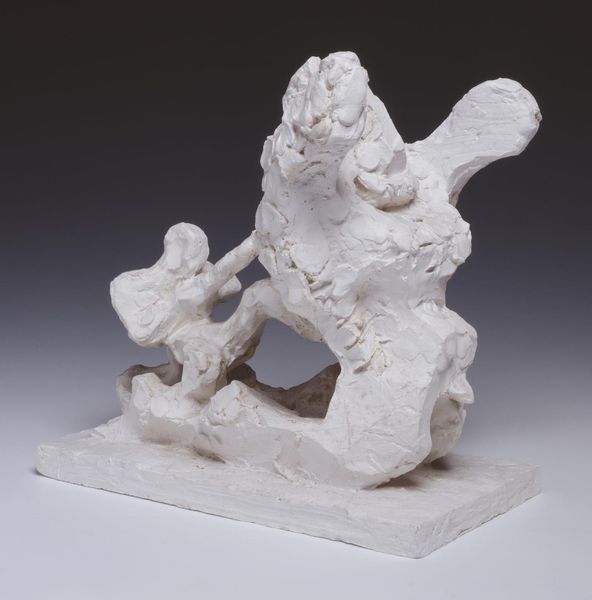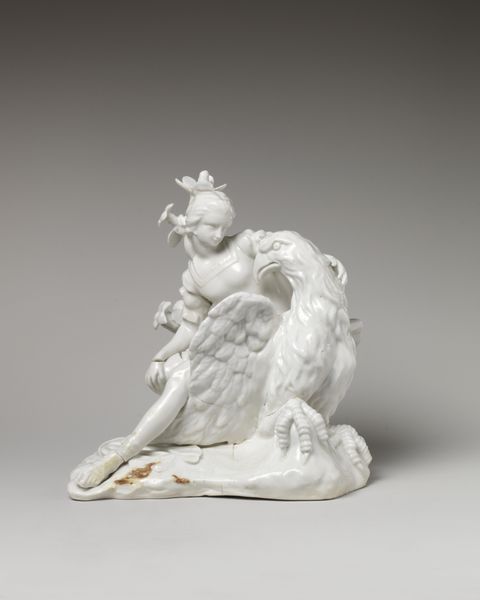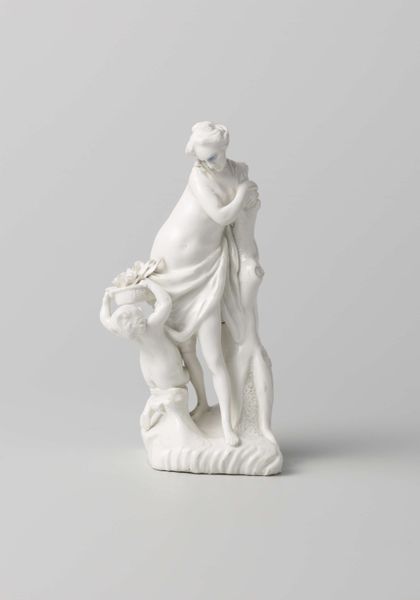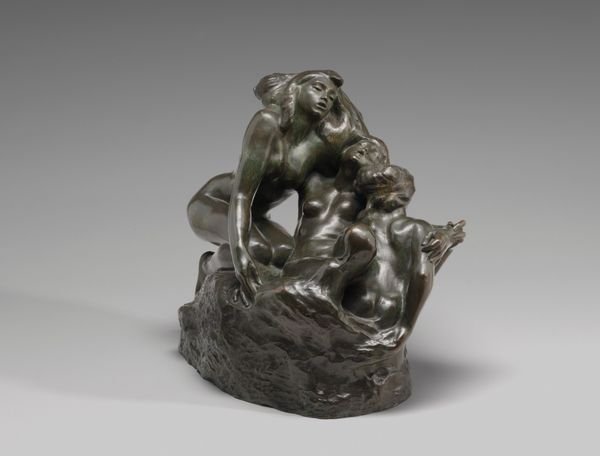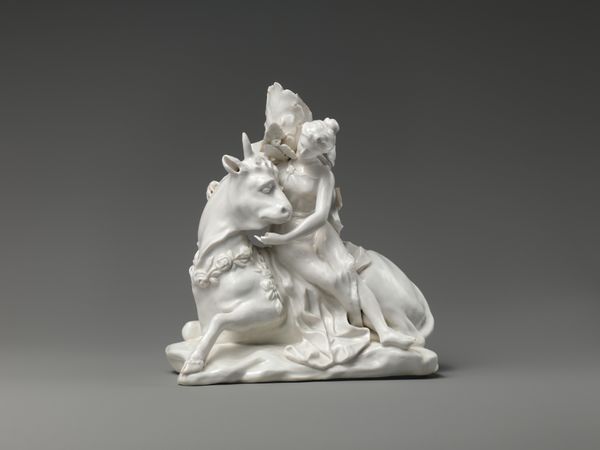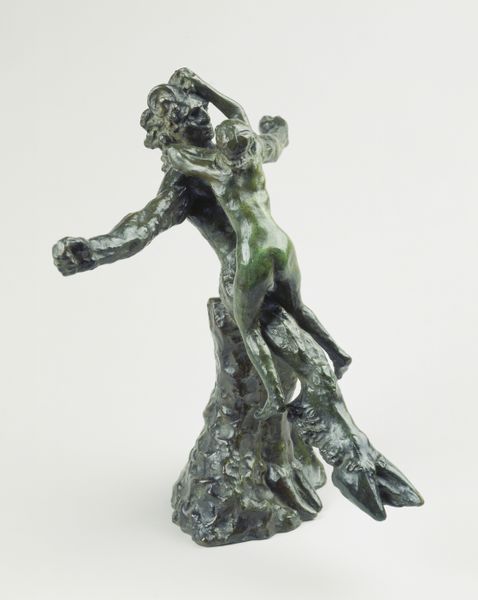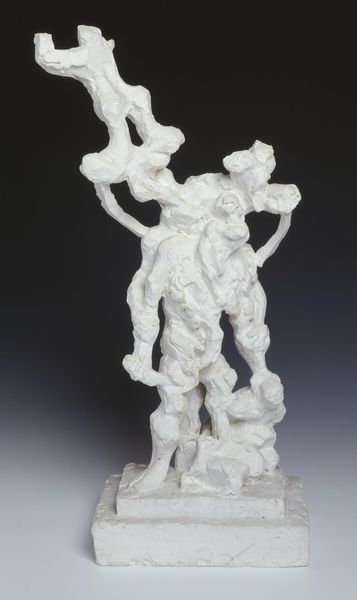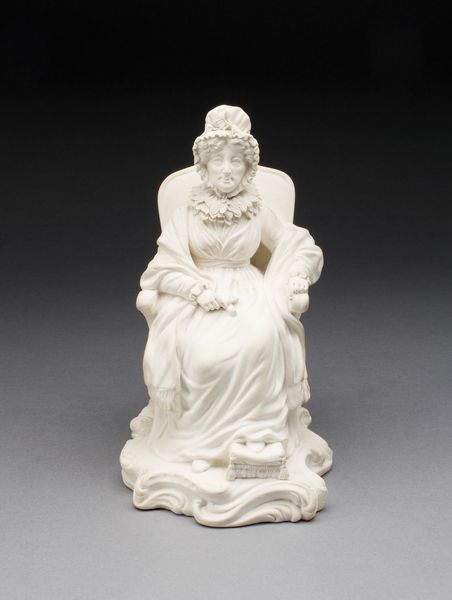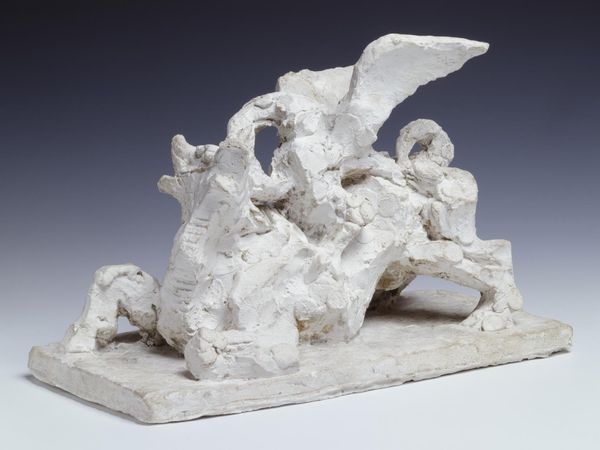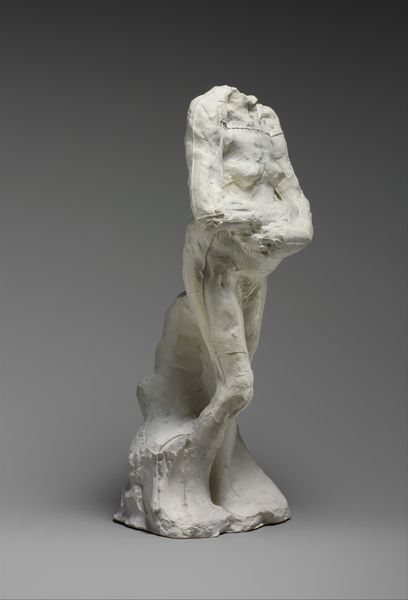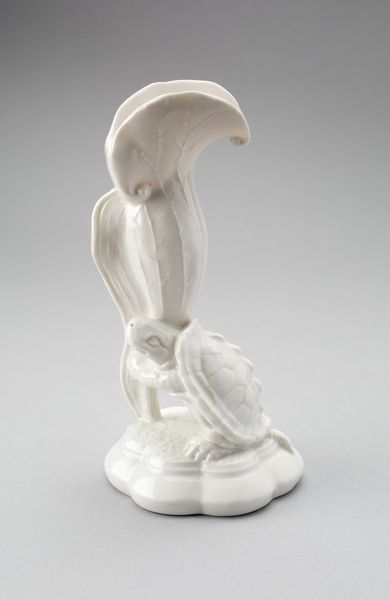
porcelain, sculpture
#
sculpture
#
porcelain
#
figuration
#
sculpture
#
rococo
Dimensions: height 15.2 cm, width 8.0 cm, depth 6.1 cm, width 7.1 cm, depth 5.3 cm
Copyright: Rijks Museum: Open Domain
Editor: Here we have "Winter, from a series of the Four Seasons," a porcelain sculpture created around 1760 by the Weesper porcelain factory. There's such a fragile quality to the figures. What can you tell us about its significance? Curator: Porcelain figurines like this were highly fashionable amongst the European elite during the Rococo period. They were displayed in elaborate cabinets, demonstrating the owner's wealth and taste. Think about the political and social context: these weren't simply decorative objects, they were status symbols signifying entry into elite circles. What do you observe about the subjects themselves? Editor: There's a female figure draped in what seems to be a robe, standing next to a small child huddled for warmth. I assume these embody the season. It is interesting to think about this object as something communicating status in society. Curator: Exactly. And the material itself is important. Porcelain production was a closely guarded secret for a long time, and Dutch factories like Weesper were competing with the renowned porcelain manufacturers of Meissen and Sèvres. This piece shows their success in emulating, and even innovating upon, that level of craft. The figure representing Winter embodies qualities associated with that season but made from porcelain and displayed during the cold winter. How might the display of this artwork alter one's experience of the cold and scarcity? Editor: It is a good point! Displaying beauty during a sparse time certainly speaks of privilege. Thinking about it that way, the sculpture is no longer so innocent; it's actively participating in a system of display and power. Curator: Precisely. By understanding the historical and social context, we can appreciate this delicate sculpture not just for its beauty but also for its role in shaping cultural values and hierarchies of the time. Editor: I’ll never look at a porcelain figure the same way again! Thanks for pointing out its significance in communicating socio-economic status, which gives the art object new depths of meaning.
Comments
No comments
Be the first to comment and join the conversation on the ultimate creative platform.
